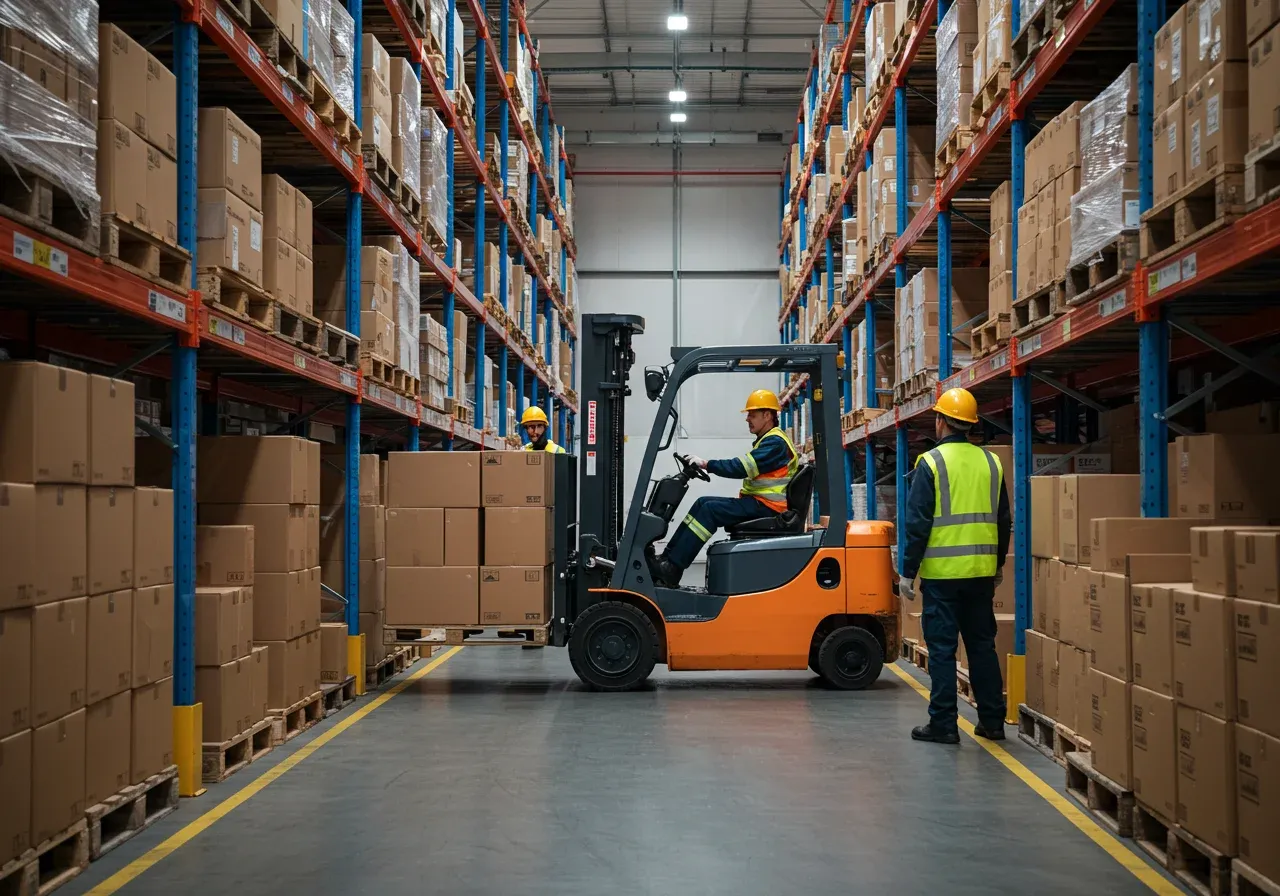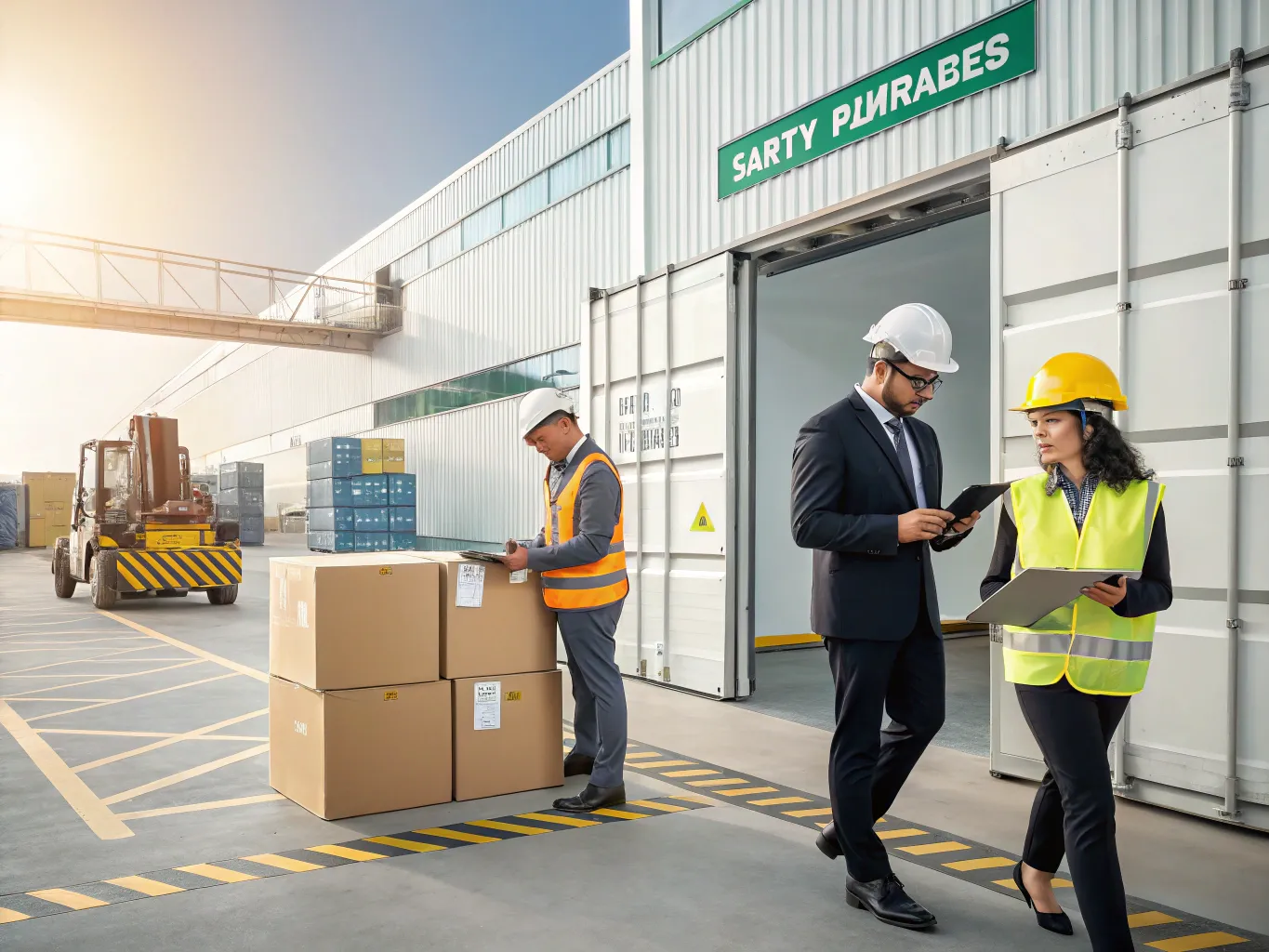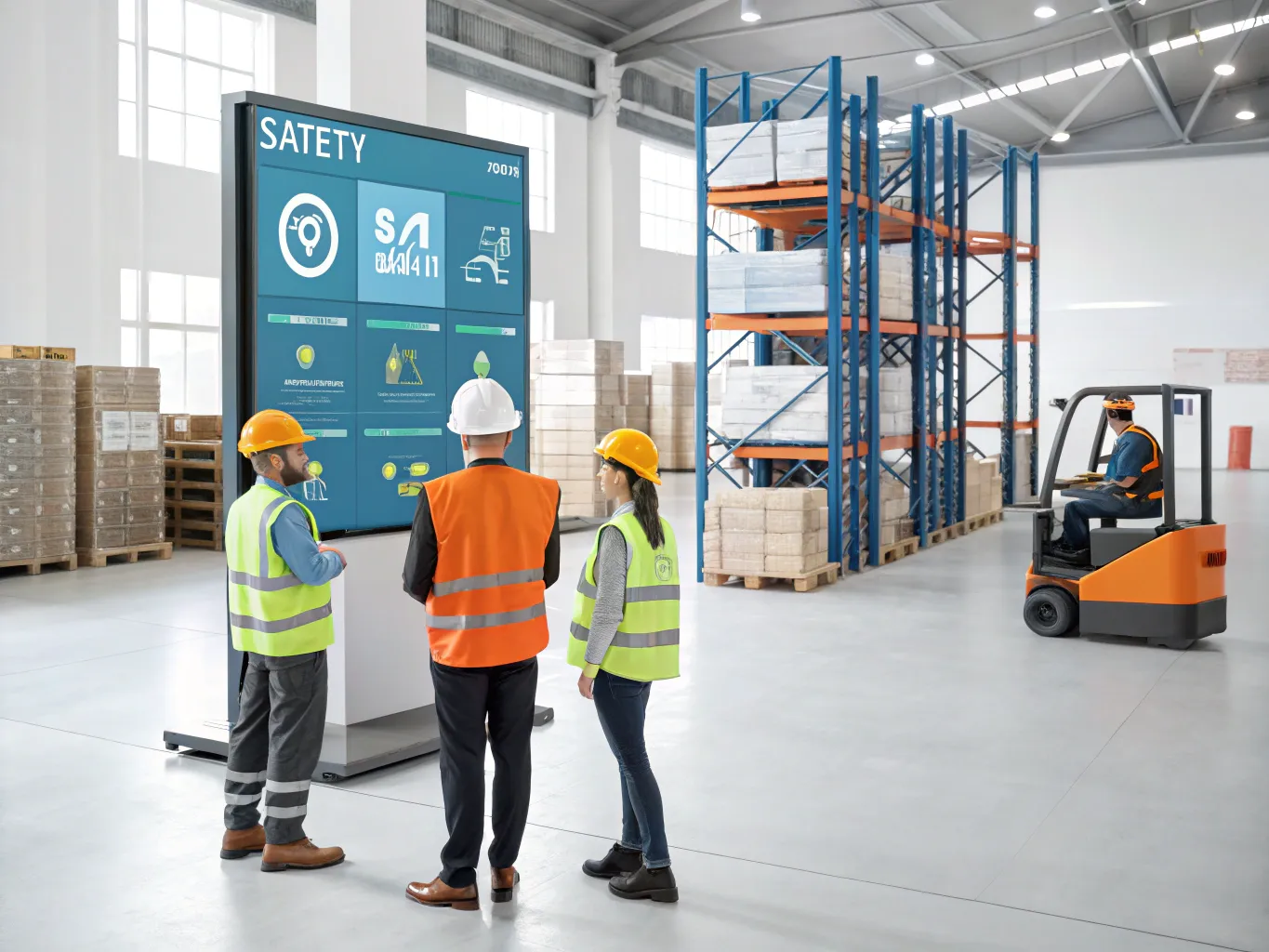
Optimize Safety in Supply Chains
Enhance supply chain security with advanced safety protocols, reducing incidents by up to 30% and increasing operational efficiency. Protect against disruptions and ensure compliance with industry regulations through tailored safety strategies.
Robust Integrated Safety Measures


Proactive Risk Management Strategies
Industries We Serve with Tailored Logistics Solutions
- Manufacturing: Streamline your production line with our logistics services, which optimize inventory levels and reduce lead times by up to 20%. Experience enhanced coordination from raw material procurement to final product delivery, ensuring seamless operations.
- Retail: Improve your retail supply chain efficiency by implementing just-in-time delivery strategies. Our service minimizes stockouts and overstock situations, enhancing customer satisfaction and increasing sales by up to 15% through precise demand forecasting.
- Healthcare: Ensure timely and accurate delivery of critical medical supplies with our healthcare logistics solutions. We help decrease supply chain disruptions by 25%, providing robust tracking systems for pharmaceuticals and medical devices, ensuring compliance with regulatory standards.
- Automotive: Accelerate your parts distribution network with our tailored automotive logistics solutions. We offer real-time inventory management and efficient route optimization, reducing transportation costs by 18% and ensuring just-in-sequence delivery to assembly lines.
- Technology: Enhance your tech product distribution with our logistics solutions, designed to meet the fast-paced demands of the industry. Using advanced analytics, we ensure swift and accurate delivery of components and finished products, reducing downtime and improving market responsiveness.
Essential Safety Protocols in Logistics
- Hazard Identification: Conduct regular audits to pinpoint potential threats in the supply chain, such as equipment malfunctions and hazardous material spills. By identifying these risks early, companies can reduce incident rates by 25%.
- Preventive Measures: Implement engineering controls like automated storage and retrieval systems to minimize human error. This approach enhances safety and can lead to a 20% increase in operational efficiency.
- Emergency Response: Develop comprehensive emergency action plans tailored to specific scenarios, such as chemical spills or natural disasters. Training staff in these protocols can reduce response times by up to 40%.
- Continuous Monitoring: Utilize IoT sensors for real-time data tracking of environmental conditions, equipment status, and personnel safety. This continuous oversight helps in maintaining optimal safety standards and has been shown to decrease accident rates by 15%.
- Compliance Training: Conduct regular training sessions on OSHA standards and industry regulations. Ensuring that all personnel are up to date with these requirements not only promotes safety but also helps avoid costly compliance penalties.
Advanced Safety Features
Real-Time Monitoring
Leverage IoT-enabled sensors for 24/7 real-time safety monitoring. This system can detect anomalies and trigger automatic responses, reducing response times by up to 50%. Enhance situational awareness and decision-making with instantaneous data.
Instant Incident Alerts
Harness AI-driven algorithms to gain immediate notifications of safety breaches. Alerts are sent via multiple channels, including SMS and email, facilitating rapid intervention. A case study showed a 40% reduction in incident escalation.
Comprehensive Safety Training
Provide your workforce with detailed safety training modules tailored to specific roles. Our program includes VR simulations, resulting in a 30% increase in hazard recognition skills. Ensure compliance and reduce workplace accidents.
Predictive Data Analytics
Utilize advanced data analytics to forecast potential safety risks. By analyzing historical data and trends, predict and mitigate risks before they occur. Studies indicate this can reduce safety-related downtime by 25%.
Ensuring Resilient and Secure Supply Chains

Comprehensive Safety Benefits in Logistics
- Enhanced Security: Leverage biometric access control systems and track vehicle locations in real-time to prevent unauthorized access, reducing security breaches by 40%.
- Cost Efficiency: Implement energy-efficient technologies and route optimization software to cut fuel costs by 25% while minimizing operational delays.
- Regulatory Compliance: Maintain updated digital records for all shipments and employee safety training certifications, ensuring compliance with ISO 45001 standards.
- Accident Reduction: Utilize telematics and driver behavior analytics to decrease accident rates by 35%, fostering a safer work environment for all employees.
- Operational Excellence: Integrate IoT devices for predictive maintenance, reducing unexpected equipment failures by 30%, and ensuring uninterrupted logistics operations.
Unpacking Safety Protocols in Logistics
Fortifying Logistics Security
You may also be interested in
Maximize your potential with our seamless, end-to-end supply chain solutions.

Global Transportation & Distribution Optimization
Enhance your logistics operations with precision-engineered transport solutions. Benefit from a 20% reduction in transit time and achieve seamless distribution across 120 countries, ensuring your supply chain remains resilient and agile.

Data Analytics & Reporting
Harness predictive analytics to streamline logistics, reduce lead times by up to 30%, and optimize inventory levels, driving smarter supply chain decisions.

Inventory Buffer Strategies
Harness strategic inventory buffers to mitigate supply chain disruptions, reduce lead times, and improve service levels. Elevate your operation's adaptability and meet fluctuating demands seamlessly with precision stock management.